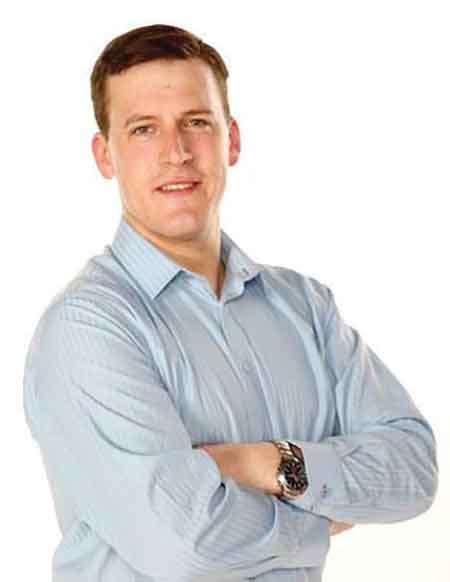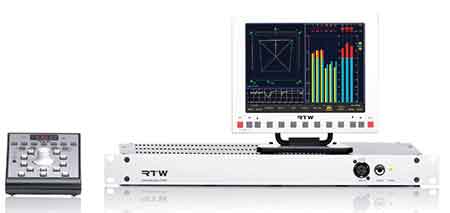Audio Monitoring Reacts To Format Changes

Craig Newbury, vice president of sales for Wohler The one constant in the broadcast industry, despite its reputation for being staid and conservative, increasingly seems to be change these days. The growing momentum behind the adoption of IP networking and transports is accelerating the rate of that change, and manufacturers of certain products are beginning to feel the pressure.
Craig Newbury, vice president of sales for Wohler, the San Francisco-based provider of audio and video monitoring gear, noted that, with a previous employer, it would take 18 months to plan and launch a new TV channel. “Now I go back to the same building in London where I used to work and they’re putting channels on-air in two days,” he said. “Customers see an opportunity to monetize content in a different way or in a new territory and they can’t wait six months to be able to do that; they need to do it immediately.
Newbury adds that broadcasters have to recognize these changes and be prepared for them. “The companies that survive will be the companies that can react to customers’ demands,” he said.
THE MOVING FORMAT TARGET

TSL’s MPA1-MixSolo MADI audio monitor The migration to IP is in full swing, agreed Matthew Colman, audio product manager for U.K-based audio monitoring provider TSL Products. With that adoption has come a proliferation of new standards.
“TSL is going to follow the standards,” he said. “But we also support some of the proprietary audio-over-IP formats.” TSL’s PAM audio monitor will add support for AES67-compliant Dante and Ravenna transports at the 2016 IBC Show, according to Colman, who adds that the company’s entry-level MPA products include a Hydra2 option for interoperability with Calrec AoIP signals.
“We remain impartial,” he said. “If a customer comes to us and says they want to do this or that, if the volume is there then we’ll support that. We see a lot more demand for Dante than we have for Ravenna, yet we still offer Ravenna,” Colman offered as an example.
Through aggressive marketing, Audinate has surged ahead of most other AoIP mechanisms, in terms of licensees and the number of products now supporting Dante. Bel, one recent example, introduced its BM-A1-64DANTE rack-mounting confidence monitor last year, and has recently started shipping the unit. Capable of monitoring up to 64 channels from Dante’s 512 maximum, either individually or simultaneously in any combination of inputs, the unit enables both broadcast and live production sound engineers to check the presence of audio on their systems, with at-a-glance front panel visual feedback.
WHO WILL WIN THE RACE?

RTW’s 31900 audio monitor Not every audio monitoring product manufacturer is ready to jump on the IP bandwagon. As Mike Kahsnitz, technical director at RTW, a U.K.-based pro audio monitoring provider, observed in response to the question of whether Dante might ultimately win out over the competition: “It might be AES67; I have no idea.”
RTW is well known for its monitoring products, which principally take the form of very sophisticated metering instruments. The company makes just one audio monitor, the 31900. It’s not a new system, said Kahsnitz, but it handles 16 digital and 16 analog inputs with a variety of Dolby decoding, and incorporates all of the company’s metering capabilities.
Any new monitoring product designs would demand a great deal of thought, said Kahsnitz. Never mind the IP options, just look at the multichannel formats that have been introduced since the launch of the 31900, he noted. “There’s the NHK-driven 22.2 system, Dolby Atmos, Auro-3D,” he said. “It doesn’t make it easy for the manufacturers, because who will make the race?”
Wohler has addressed this environment of constant change with a new hardware platform, iAM, which enables the company to be iterative in its product development through software updates. ���A two-year development cycle just doesn’t cut it anymore,” Newbury pointed out. “You’ve got to be able to talk to customers, react to their requirements, to new standards, to new methodologies and technologies. We can add those to the product over time, and help our customers get a return on investment.”
OUTSIDE THE BOX
With the packetization of audio and video comes its attendant data and metadata, which monitoring manufacturers must also address in their products. TSL, which also makes control systems, is looking forward to the standardization of the VSF Technical Recommendations TR-03 and TR-04 in SMPTE 2110, said Colman. “Perhaps the industry will look to standardize network discovery, communication, and the control aspects of IP. We’re going to make sure that our products are totally aligned, so that we’re at the forefront of what’s going on.”
Wohler, too, is adding third-party control, said Newbury. “We can’t be isolationist. Customers want to be able to use our devices to drive other systems within their workflows. So we’re developing capabilities in our products that allow us to integrate more fully into a much more automated way of working.”
The company’s monitoring boxes and the new iAM platform also enable remote monitoring. “Customers can see the metering through a web browser interface,” Newbury said. “They can consume that data wherever they are, on any device, as long as they can network to the monitoring unit.”
With IP infrastructures, said Newbury, “you’ve got to have a full router inside the box. Our platform will enable those types of applications that allow our customers to not just monitor signals but to be able to utilize those signals within their workflows, which is becoming increasingly important.”
As to the future, Wohler plans to move into software monitoring, according to Newbury. “I can imagine moving towards a scenario where we have a range of different form factors that customers can enjoy, whether they want rack-mounting, handheld, or software devices,” he said.
Wherever the future takes the industry, said Colman, “I think you’ll always have a need for a humble audio monitor. But I think you’re going to see virtualization of television stations, so some kind of software, cloud-based audio monitor is inevitable.”
IP infrastructures are enabling the transport of thousands of channels of audio, observed Newbury. “If you layer in Dolby and audio description the number of audio tracks becomes incredibly large. The management of those audio channels is a real headache.”
Technologies such as MADI could handle that in the baseband domain, he continued. “The IP realm is marketed as being a lot simpler, but in my experience it’s simply not the case,” Newbury said. “Customers are running into a bunch of new problems that haven’t yet got a solution.”
Get the TV Tech Newsletter
The professional video industry's #1 source for news, trends and product and tech information. Sign up below.
Steve Harvey began writing for Pro Sound News and Surround Professional in 2000 and is currently senior content producer for Mix and a contributor to TV Tech. He has worked in the pro audio industry—as a touring musician, in live production, installed sound, and equipment sales and marketing—since November 1980.
